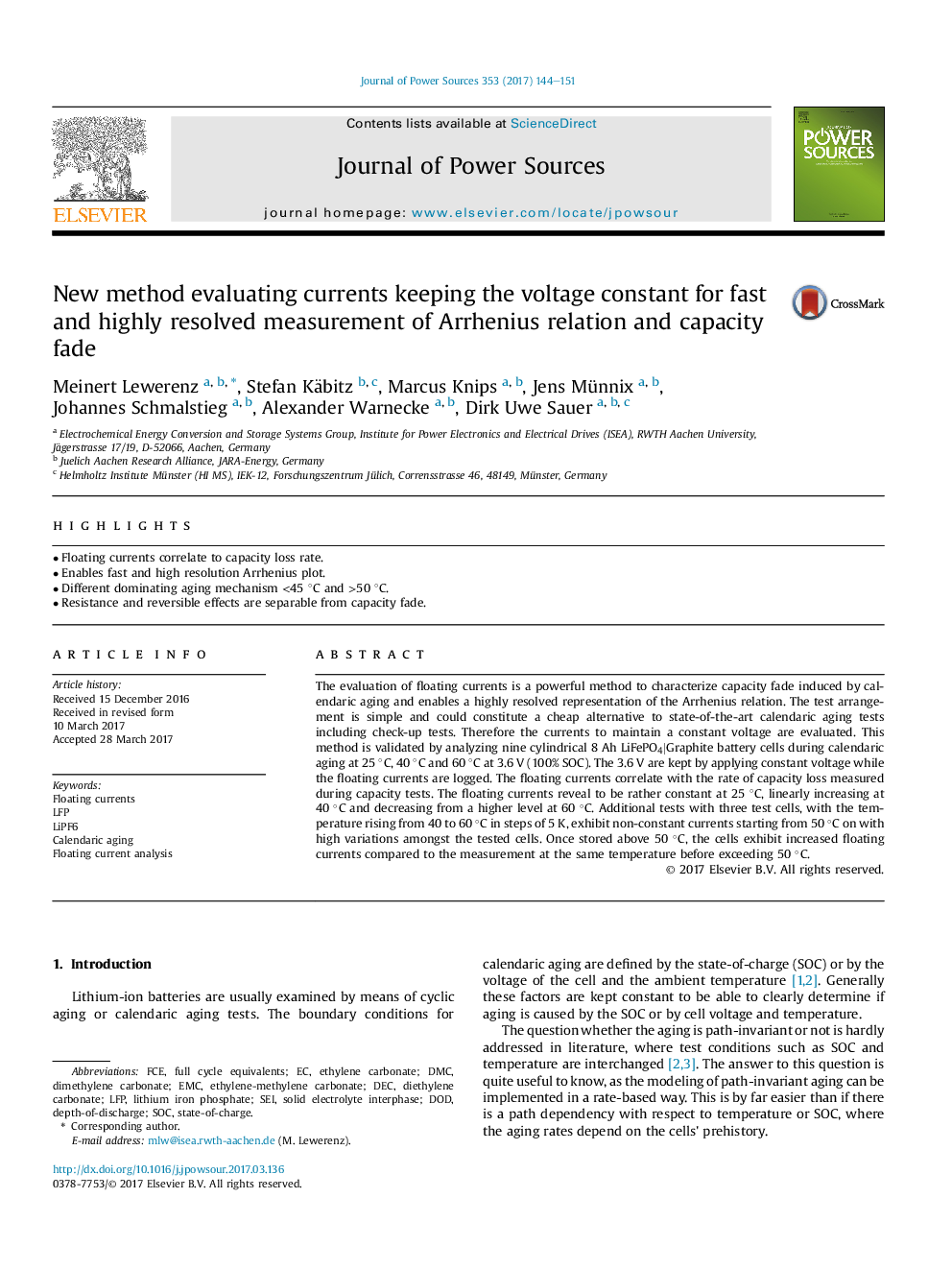| Article ID | Journal | Published Year | Pages | File Type |
|---|---|---|---|---|
| 5149149 | Journal of Power Sources | 2017 | 8 Pages |
Abstract
The evaluation of floating currents is a powerful method to characterize capacity fade induced by calendaric aging and enables a highly resolved representation of the Arrhenius relation. The test arrangement is simple and could constitute a cheap alternative to state-of-the-art calendaric aging tests including check-up tests. Therefore the currents to maintain a constant voltage are evaluated. This method is validated by analyzing nine cylindrical 8 Ah LiFePO4|Graphite battery cells during calendaric aging at 25 °C, 40 °C and 60 °C at 3.6 V (100% SOC). The 3.6 V are kept by applying constant voltage while the floating currents are logged. The floating currents correlate with the rate of capacity loss measured during capacity tests. The floating currents reveal to be rather constant at 25 °C, linearly increasing at 40 °C and decreasing from a higher level at 60 °C. Additional tests with three test cells, with the temperature rising from 40 to 60 °C in steps of 5 K, exhibit non-constant currents starting from 50 °C on with high variations amongst the tested cells. Once stored above 50 °C, the cells exhibit increased floating currents compared to the measurement at the same temperature before exceeding 50 °C.
Keywords
Related Topics
Physical Sciences and Engineering
Chemistry
Electrochemistry
Authors
Meinert Lewerenz, Stefan Käbitz, Marcus Knips, Jens Münnix, Johannes Schmalstieg, Alexander Warnecke, Dirk Uwe Sauer,
